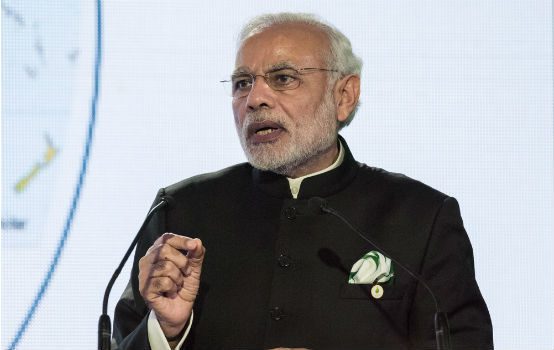India’s Lurch Towards Protectionism

At a Global Business Summit in New Delhi late last month, Indian Prime Minister Narendra Modi aimed to enthuse foreign investors by declaring that “India is open for business.” Yet India has taken several protectionist steps over the last four months, raising fears that the populist job pressures driving Trump in the U.S. are beginning to animate Modi, too, now that he’s entering his final year before the 2019 general election.
Optimists hope this is just a blip in the reform process that will go away after the voting is over. But no government that tom-toms protectionism as a job-creating blessing can easily reverse it later.
Before liberalizing its economy in 1991, India had hundreds of import duties on different items, some above 300 percent. High tariffs aimed to accelerate industrialization, while widely dispersed tariff rates across sectors reflected lobbying (and kickbacks). The wide variation in tariffs on different items led to false invoicing, tax evasion, and corruption. The results were slow growth, uncompetitive industry, and empty government coffers when oil prices exploded in 1990.
By contrast, liberalization led to steadily falling import tariffs, with only occasional hiccups. In 1997, then-finance minister Palaniappan Chidambaram declared that India would gradually cut its tariffs to the levels of its Asian neighbors, many of which had become miracle economies. In subsequent years, different parties came to power, but all followed the same approach. By 2007, India’s peak non-agricultural tariffs were down to 10 percent, a smidgeon above those in other Asian countries. The wide variation in duties ended.
The result: GDP growth accelerated to 8 percent per year after 2004, and India became a global export hub for small cars, two-wheelers, and pharmaceuticals. Encouraged, Finance Minister Ashok Jaitley pledged in 2015 to cut corporate tax rates to the level of India’s Asian competitors, hoping to replicate their path to success.
Now that paradigm is being upended. Last October, duties were raised on synthetic fabrics. Then in December, import duties were raised to 20 percent on electronic items ranging from mobile phones and TVs to digital cameras and microwave ovens. Optimists felt this was a temporary aberration, and were comforted when Modi went to Davos, sang the praises of globalization, and slammed President Trump for “America First” protectionism.
February’s budget shattered those hopes. Import duties were raised on around 40 items “to provide adequate protection to domestic industry,” and “promote creation of more jobs.” Duties went up to 15 to 20 percent on items as varied as auto parts, candles, kites, sunglasses, lamps, cigarette lighters, toiletries, toys, watches, footwear, and furniture. The duty on fruit juices and miscellaneous processed foods went up to 50 percent.
Revenue Secretary Hasmukh Adhia did not even offer the fig leaf of claiming that these duties are designed to protect fledgling industries. He baldly stated that the aim was to protect small and medium enterprises.
The new policy also returns to the bad old variation in tariff rates, with all its scope for lobbying, corruption, and false invoicing. Many more industries will now demand similar additional protections, and Modi will be tempted to give in as the next general election nears in May 2019.
Modi had promised to create 100 million jobs in manufacturing through a “Make in India” scheme, but manufacturing growth is estimated at just 4.9 percent this fiscal year, compared to 7.9 percent the year before. For Modi this is an existential political issue—tepid growth and limited employment remains a major problem, especially for youths with useless degrees from useless colleges. Dominant rural castes (with much political clout) have agitated for quotas in government jobs, even though such quotas are supposed to be for socially and educationally backward classes.
The new protectionism aims to create more jobs. But it ignores past experience.
Meanwhile farm distress is widespread because of two recent droughts and falling world prices. To combat this, agricultural import duties have been raised sharply in recent months, the highest rate being 100 percent on sugar. The volte-face on industrial and farm tariffs suggests political panic on job creation and farm distress as the next election approaches.
Indian businessmen are instinctively protectionist, and India is among the biggest users of anti-dumping duties. Businessmen ascribe China’s success to protection and manipulation. Some say India should copy China’s policy of creating large industries behind tariff walls, attaining huge scale economies and then swamping the world with cheap exports. They say this “new protectionism” will be outward looking and hence different from the “old protectionism” of India’s socialist era.
Alas, the outcome is unlikely to be better. Not even the finest business orator can credibly argue that raising import duties to 20 percent will make India a China-style champion in exporting candles, furniture, or toiletries. As President Trump brings the protectionist playbook to the U.S., India should be differentiating itself by sticking with the polices that have made it a success story in recent years. It takes political courage to stand against the rising tide of populism, but the economic results are worth it.
Swaminathan S. Anklesaria Aiyar is a research fellow at the Cato Institute.
Comments